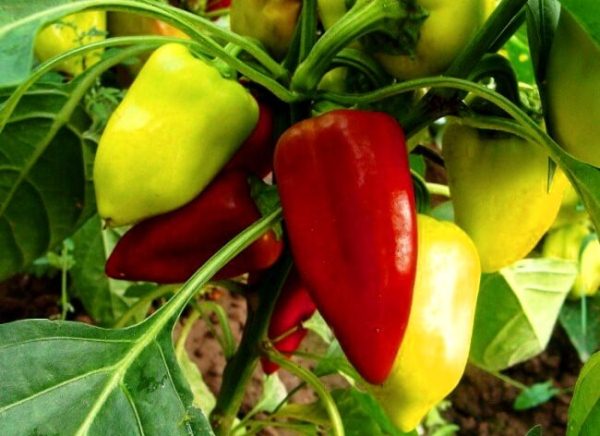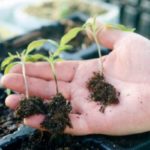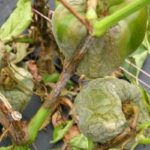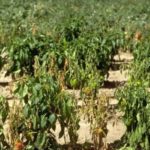This sweet variety is considered to be high-yielding and easily grown. He is valued by gardeners for an increased level of plasticity, which makes it possible to adapt to any natural whims without problems. Besides, the dense skin of the Swallow variety allows you to store the crop for a long time. Aging ripening provides a one-time harvest, which is enough for the planned meals and preservation. In this review you can get acquainted with the description and characteristics of this variety of pepper.
Table of contents
Description and characteristics of sweet pepper Swallow
The plant is distinguished by semi-sprawling standard forms, reaches a height of sixty centimetersrequires binding. The variety is middle-ripened, the period before harvesting is about four months. Productivity is high, reaching five kilograms per square meter of land.
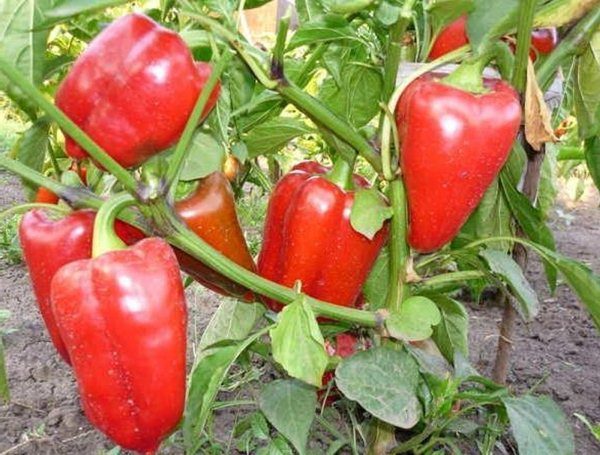
The main characteristics are:
- thick wallsreaching five to seven millimeters;
- conical, several oval shape;
- Red color fully ripe peppers;
- average weight - from seventy to one hundred grams;
- length reaches ten centimeters.
The variety has its unusual name due to Soviet breeding specialists, who allegedly bred it in 1976. Pepper grows easily both in unprotected soil and in greenhouse conditions, it is highly resistant to bacterial diseases.
The advantages and disadvantages of the variety
Swallow, like other varieties, contains a huge amount of nutrients that have a positive effect on the human body. Pepper is able to strengthen the immune systemby reducing the vulnerability to respiratory infections.
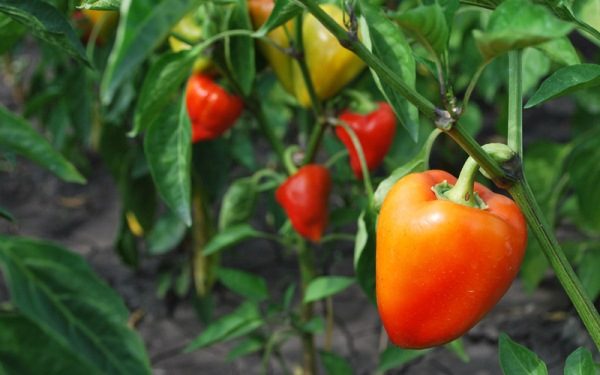
Useful substances that give pepper value and consistency on the dining table, carry a group of vitamins, antioxidants, alkaloid, capsaicin. In addition to the above, pepper contains a large amount of ascorbic acid and carotene, perfectly helping the pancreas to work and normalizing blood pressure. Vegetable helps prevent blood clots, improves appetite and complexion. It is believed that one pepper contains the amount of vitamin C, how much an adult needs this component per day.
Although the vegetable has a sweetish aftertaste, diabetics can safely eat it. There is no sucrose in the Swallow, but a different carbohydrate is present - fructose. The presence of vitamin A helps to improve the condition of the hair and skin. Some vitamins even help prevent early aging and cancer.
However, there are negative points.
Planting seeds
The process of growing and grooming peppers does not have any particular difficulties. Seeds of a variety differ in quite good viability, so that for planting a vegetable, you can collect seed by yourself or purchase it in a specialty store. Before planting, it is necessary to check the seeds, select the best ones, disinfect them, soak them in a phytopreparation, germinate in a warm place, spreading them on a moist gauze. As a rule, the process of germinating seeds begins in late February.
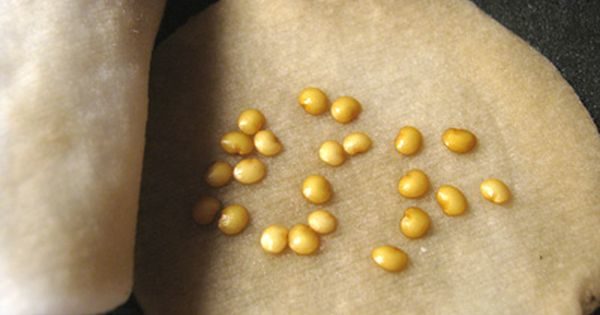
Soil for planting crops should be cleared of weedswell loosened. After the markings are completed, the holes are dug, which are half filled with nutrient soil.
Seedling growing conditions
For this purpose, various containers suitable for their size. They are recommended to be steamed beforehand to reduce the likelihood of disease.. The containers are filled with soil, on which the seeds are laid out with an interval of one and a half - two centimeters. Planting material is sprinkled with a centimeter layer of soil, containers are placed in a warm place. A windowsill that has sufficient lighting is best suited.
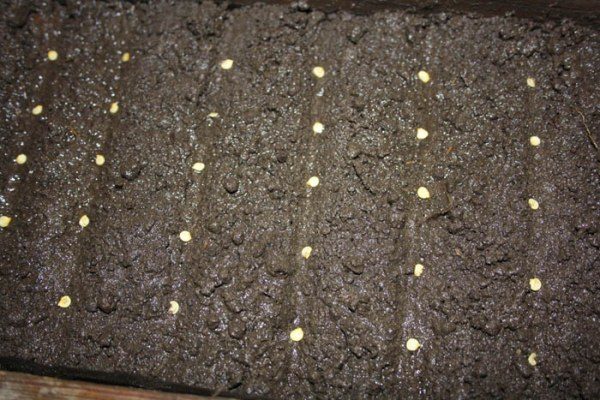
Seeds begin to germinate on the fourth day. At this point, you can slightly lower the temperature, so that the shoots are not strongly stretched.
In the process of growth, the peppers should be moved to separate pots so that the plants cannot overpower each other. The first feeding procedure is performed when three to four leaves are formed. You can use ready-made compositions or mix in five liters of water 15 g of potassium salt, 25 g of urea, 60 g of superphosphate.
Transplantation in open ground
You can do it in June. The plant is placed in the hole so that the root part remains above the surface of the bed. The root system is being straightened, the hole is covered with soil. It is necessary to water the seedlings and install the pegs for the support.
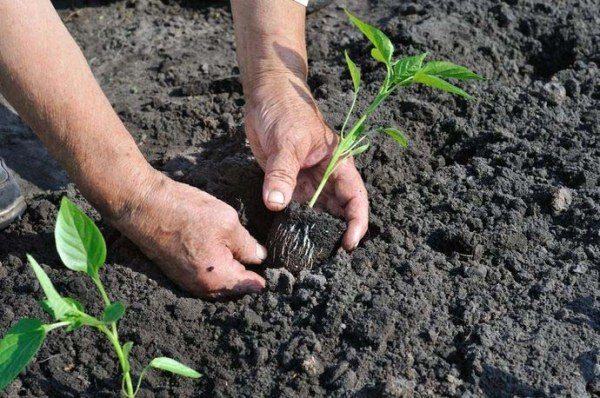
An important feature - compliance with crop rotation. Best of all, if the predecessors of the peppers are carrots, onions, pumpkins or cucumbers.It is not necessary to plant a crop in the places where tomatoes, potatoes, and eggplants grew before.
Diseases and pests
Irregularities in the irrigation, high temperature, poor ventilation can cause fungal diseases - blight, blackleg, fusarium, gray rot. In the first case, you can use drugs Barrier or Barrier.
In the case of blackening legs the affected plant must be removed, the soil in the garden is dried, sprinkled with wood ash, the plants are treated with fungicide.
With fusarium - yellowing of the foliage - the affected shrub is removed, for the rest, enhanced care is organized, which is related to the prevention of drying out of the ground and the growth of weeds. From the gray rot, which can affect peppers at any stage of growth, will help the constant treatment of the beds with fungicidal solutions.
- Fungal black leg in pepper seedlings
- Phytophthora of Bulgarian pepper
- Fusarium pepper wilting
Pepper can suffer from harmful parasites - thrips, aphids, spider mites, slugs and whitefly.It is recommended in such cases to spray the plants with a solution of soap, garlic or onion infusions, celandine or bitter wormwood. From the slugs will help mustard powder, which simply crumbles in the garden beds. Tobacco dust and hot peppers are used for the same purpose.
Everything else agrotechnical measures for growing the Swallow variety are quite traditional. In order for a culture to develop successfully and bear fruit well, it should organize permanent watering, loosening of the soil, removal of weeds.
